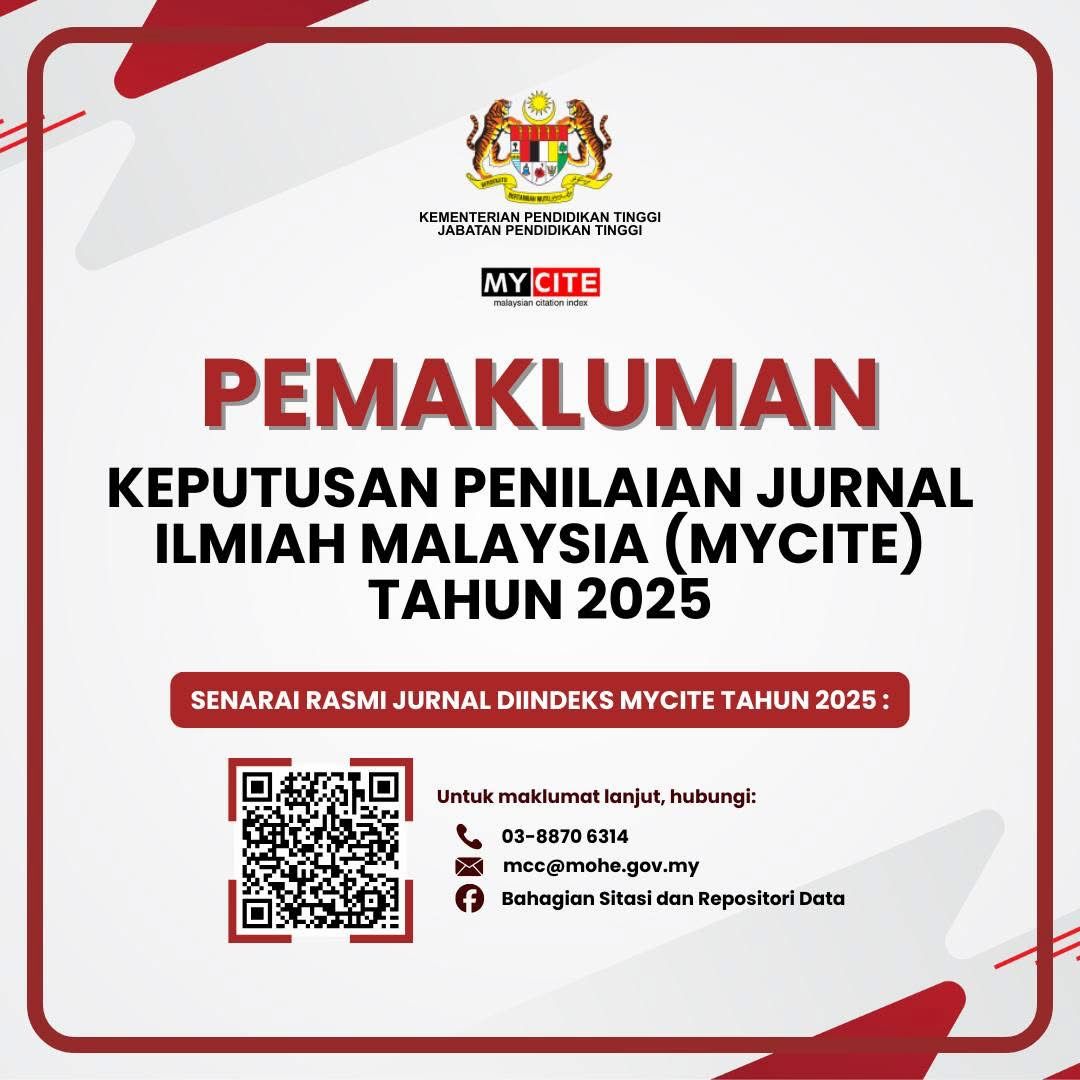The Components of 3D Virtual Environment Design in Immersive Virtual Reality for Cultural Heritage Preservation
DOI:
https://doi.org/10.24191/idealogy.v10i2.830Keywords:
3D Virtual Environment, Immersive Virtual Reality, Cultural Heritage PreservationAbstract
This study examines the use of 3D virtual environment design components in immersive Virtual Reality (VR) applications for cultural heritage preservation. As intangible cultural heritage faces challenges from modernisation and declining public interest, particularly among younger generations, immersive VR offers an opportunity to present cultural narratives in engaging and interactive ways. This research aims to identify the key components of 3D environment design used in cultural heritage VR and analyse their implementation across existing projects. A qualitative content analysis approach was applied, using a structured 5-point rating scale to evaluate seven (7) immersive VR heritage projects. The evaluation framework included components such as terrain, structures, props, lighting, atmosphere, storytelling, interactivity, and sound design. The results show that storytelling and architectural structures scored highest in consistency and cultural impact, while props and object interaction were less effectively utilised. This suggests that while many VR heritage applications succeed in visual and narrative immersion, they often lack depth in interactivity and functional realism. The study concludes that 3D design frameworks, when carefully implemented, can significantly enhance user engagement and cultural authenticity in immersive heritage experiences. These findings provide design insights for VR developers and cultural institutions aiming to create more meaningful, interactive, and preservation-focused virtual environments.
Keywords: 3D Virtual Environment, Immersive Virtual Reality, Cultural Heritage Preservation
References
Addison, A. C. (2000). Emerging trends in virtual heritage. IEEE Multimedia, 7(2), 22–25. https://ieeexplore.ieee.org/document/848420
Bekele, M. K., Pierdicca, R., Frontoni, E., Malinverni, E. S., & Gain, J. (2018). A survey of augmented, virtual, and mixed reality for cultural heritage. ACM Journal on Computing and Cultural Heritage, 11(2), 1–36. https://doi.org/10.1145/3145534
Bruno, F., Bruno, S., De Sensi, G., Luchi, M. L., Mancuso, S., & Muzzupappa, M. (2010). From 3D reconstruction to virtual reality: A complete methodology for digital archaeological exhibition. Journal of Cultural Heritage, 11(1), 42–49. https://doi.org/10.1016/j.culher.2009.02.006
Catanese, R., Gori, M., & Magaudda, P. (2011). Designing virtual environments for cultural heritage: A content-based approach. International Journal of Heritage in the Digital Era, 1(1), 107–118.
Champion, E. (2016). Critical gaming: Interactive history and virtual heritage. Routledge.
Jerald, J. (2015). The VR book: Human-centered design for virtual reality. Association for Computing Machinery. https://doi.org/10.1145/2792790
Krippendorff, K. (1980). Content analysis: An introduction to its methodology. Sage Publications. Likert, R. (1932). A technique for the measurement of attitudes. Archives of Psychology, 22(140), 1–
55.
Minocha, S., Tudor, A.-D., & Tilling, S. (2017). Affordances of mobile virtual reality and their role in learning and teaching. Journal of Perspectives in Applied Academic Practice, 5(2), 1–15. https://doi.org/10.14297/jpaap.v5i2.273
Muhammad, Din, S. C., & Ghazali, M. (2024). Content Analysis of Graphic Elements in 2D and 3D Animated Explainer Videos for 3D Laser Scanning in Construction. Idealogy Journal, 9(2). https://doi.org/10.24191/idealogy.v9i2.561
Nasruddin, A. N., Ghazali, M., & Din, S. C. (2024). Exploring The Usage of Motion Graphic Elements in Projection Mapping Video to Promote Agrotourism in Malaysia. Idealogy Journal, 9(2). https://doi.org/10.24191/idealogy.v9i2.564
Noor Hishamuddin, N. K. B., Anuar, I. M. H., Che Din, S., & Lazim, N. A. M. (2024). An integration of 3D design in Malaysia digital tourism. Idealogy Journal, 9(1). https://doi.org/10.24191/idealogy.v9i1.492
Petrelli, D., Ciolfi, L., Van Dijk, D., Hornecker, E., Not, E., & Schmidt, A. (2013). Integrating material and digital: A new way for cultural heritage. interactions, 20(4), 58–63. https://doi.org/10.1145/2486227.2486239
Slater, M., & Wilbur, S. (1997). A framework for immersive virtual environments (FIVE): Speculations on the role of presence in virtual environments. Presence: Teleoperators and Virtual Environments, 6(6), 603–616. https://doi.org/10.1162/pres.1997.6.6.603
Wang, X., Schnabel, M. A., & Kvan, T. (2019). Digital heritage representation in virtual environments. International Journal of Architectural Computing, 17(1), 3–16. https://journals.sagepub.com/doi/full/10.1177/1478077119833721
Yi, Z., Ramlie, M. K., & Subri, S. (2024). Exploring the impact of emotion on future sustainable development education: Leveraging virtual reality technology. Idealogy Journal, 9(1), 32–38. https://doi.org/10.24191/idealogy.v9i1.532
Downloads
Published
Issue
Section
License
Copyright (c) 2025 UiTM Press

This work is licensed under a Creative Commons Attribution-NonCommercial-NoDerivatives 4.0 International License.
UiTM Press (the Publisher) has agreed to publish the undersigned author’s paper in Idealogy Journal. The agreement is contingent upon the fulfilment of a number of requirements listed below.
1. The undersigned author warrants that the paper entitled below is original, that it is not in any way libellous or unlawful in Malaysia, that it does not infringe any copyright or other proprietary right. The undersigned hereby represents and warrants that he/she is the author of the paper, except for material that is clearly identified as to its original source, with permission notices from the copyright owners where required. The undersigned represents that he/she has the power and authority to sign and execute this agreement.
2. The undersigned author warrants that the paper entitled below has not been published elsewhere, and also it will not be submitted anywhere else for publication prior to acceptance/rejection by this Journal.
3. By submitting the paper entitled below, the undersigned author agrees to transfer the rights to publish and distribute the paper in an international e-journal (entitled above) to Publisher.
4. The undersigned author agrees to make a reasonable effort to conform to Publisher's submission guidelines and to liaise with the editor to ensure that the requirements of these guidelines are met to a reasonable degree.
5. The corresponding author signs for and accepts responsibility for releasing this material on behalf of any and all coauthors. This agreement is to be signed by at least one of the authors who has obtained the assent of the co-author(s) where applicable. After submission of this agreement signed by the corresponding author, changes of authorship or in the order of the authors listed will not be accepted.



